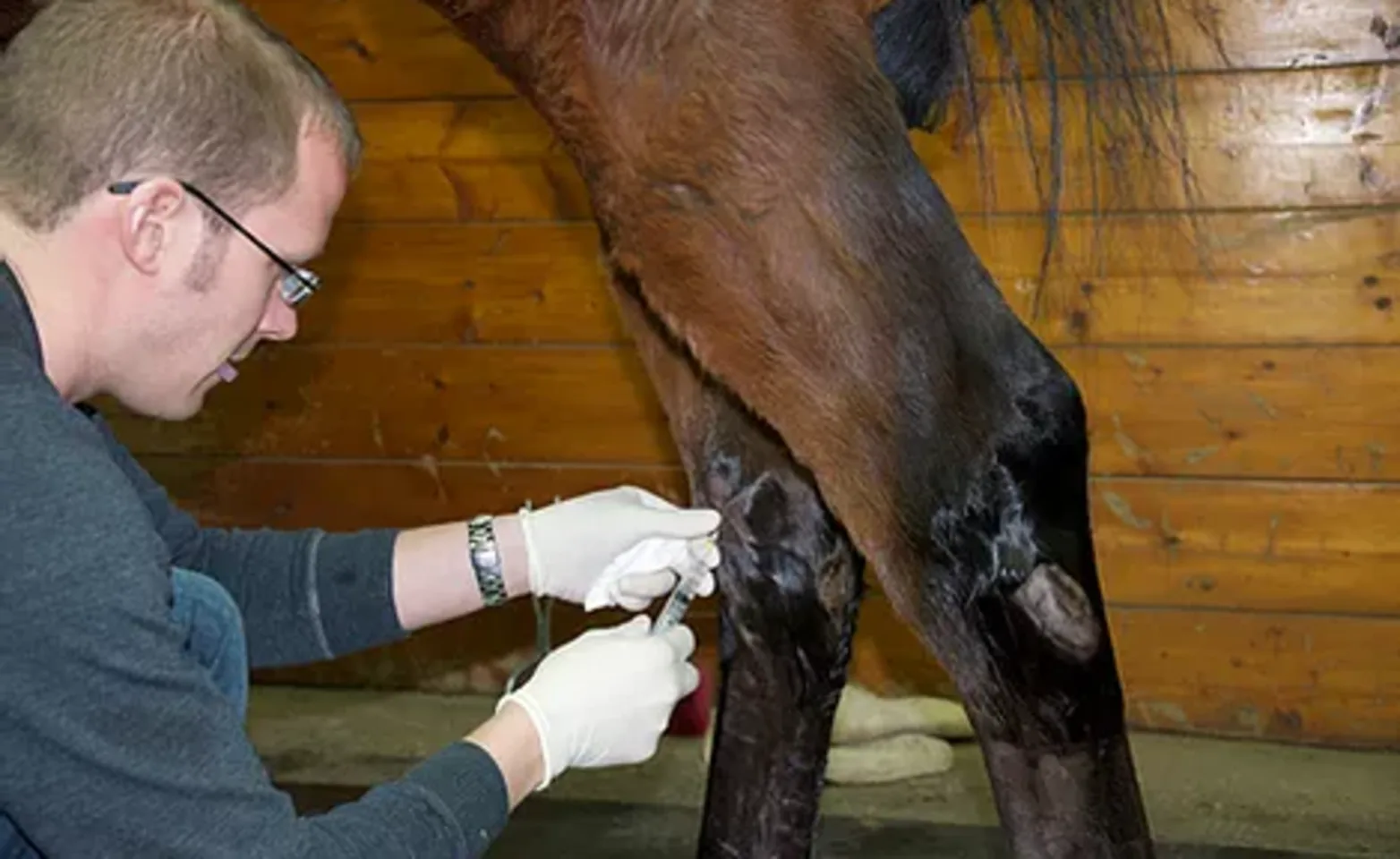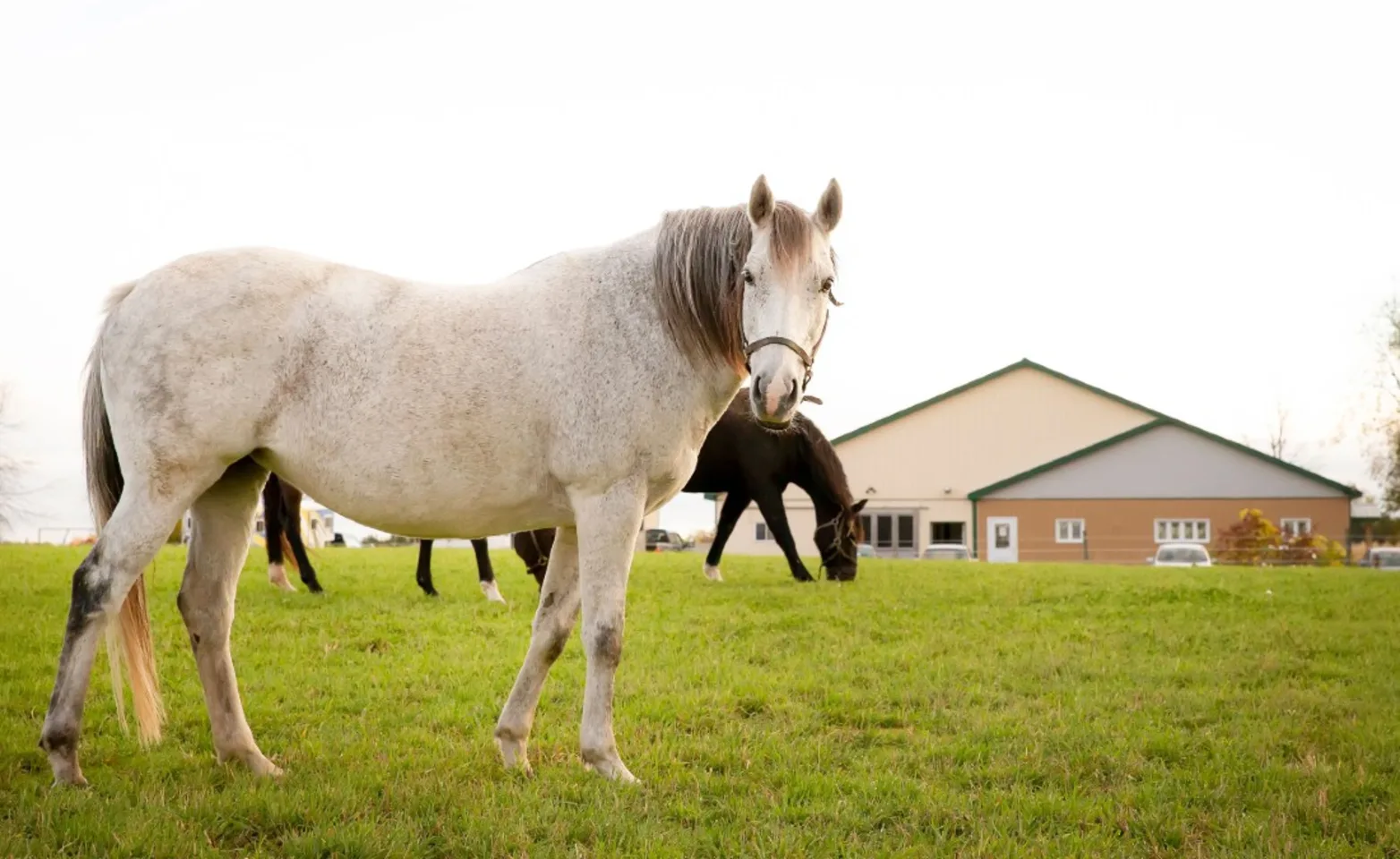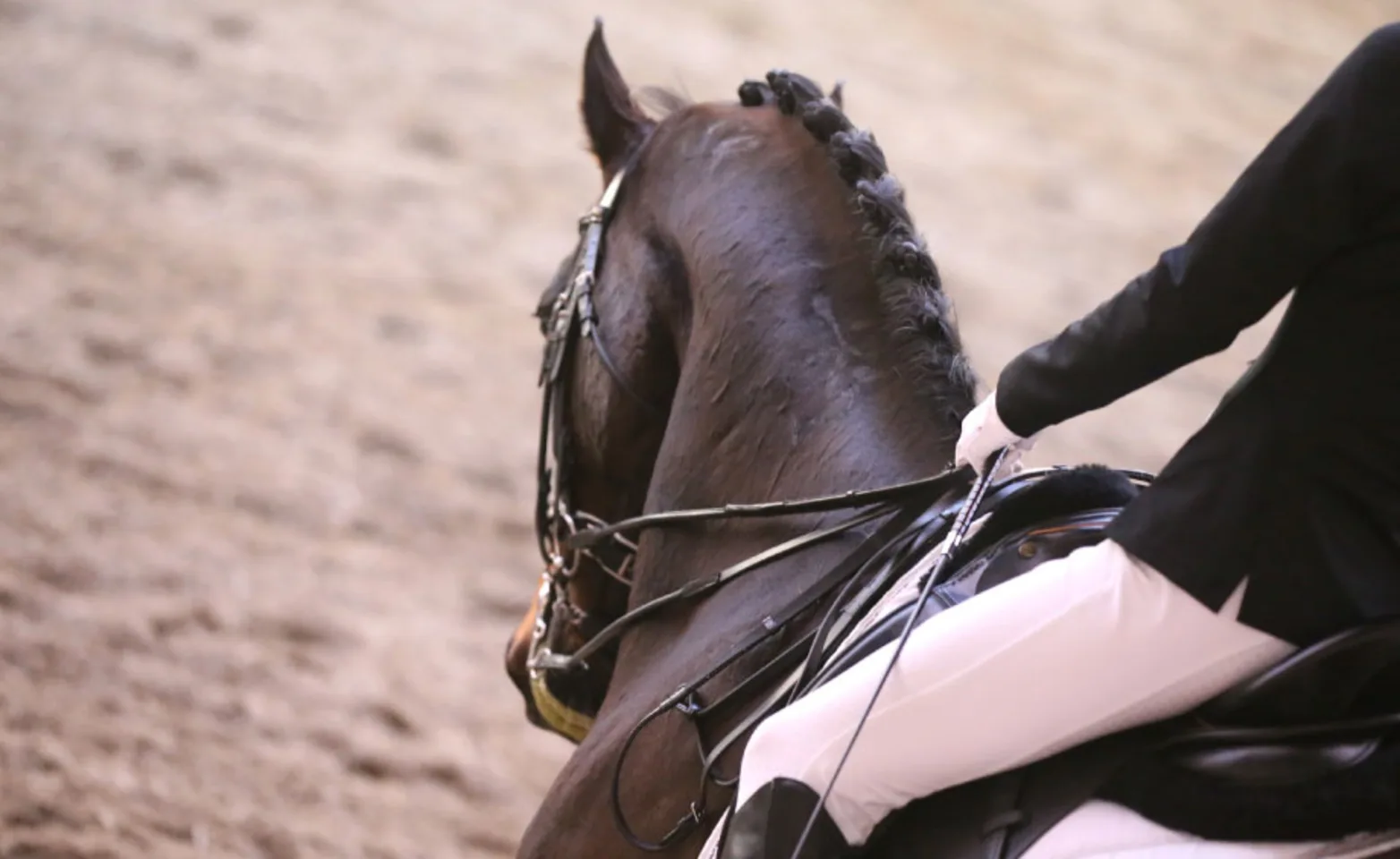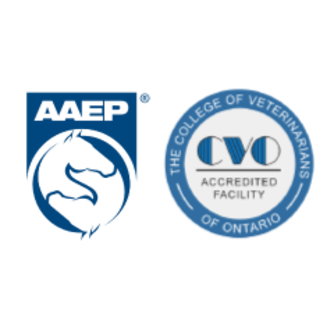Russell Equine Veterinary Service

Joint Injection
With joint disease and arthritis so prevalent in the modern sport horse, joint injection is both a diagnostic and therapeutic tool. Through the use of varying medications, joint injections can offer to help localize and potentially slow the progression and onset of joint disease. However, all joint injections regardless of the product used should be conducted in association with a thorough lameness examination to ensure they are effective. Lameness examination may include diagnostics such as quality x-rays and ultrasound examinations to ensure that joint injection is the best option. As an owner, you are not expected to be well versed in the current trends in joint therapy! If you feel as though your horse is exhibiting lameness, contact us to book an examination to see what therapeutic options might be right for you and your horse.

Shockwave Therapy
Extracorporeal shock-wave therapy (ESW) has its roots in human medicine where it was used to break up kidney stones. However, it has found wide usage in equine sports medicine. The shock-wave that is used is a pressure wave that passes through the targeted tissue as an earthquake passes through the ground.
At Russell Equine we offer focused shock-wave therapy with the Pulsevet shock-wave system. With uses in non-union fractures, non-healing wounds, and tendon injury- focused shock-wave therapy increases blood flow in the affected region while decreasing the pain sensation.
Many clinical uses have been discovered for shockwave therapy in the treatment of equine lameness. some of the most popular include tendonitis, suspensory ligament desmitis, synovitis, non-healing wounds, solar abscessation, sesamoiditis, diffuse foot pain, splint management.

Platelet Rich Plasma (PRP) Therapy
PRP Therapy involves the centrifugation of blood collected from the patient to be treated in a special way to increase the platelets in the sample. Injection of platelet-rich plasma into tendon and ligament injuries has several benefits, such as releasing growth factors that help modulate the healing process. As a result, the area of the tendon that is injured is able to heal with less scarring- which increases its tensile strength and durability as compared to tendon injuries that do not receive PRP therapy. This leads to a faster return to work, and a decreased chance of recurrence for your horse.
Similar to its use in tendon and ligament injuries, PRP can also be used as a joint therapy. When injected into a joint, the activated platelets are able to help modulate the joint's inflammatory process and decrease pain/slow down cartilage damage.

IRAP2
Russell Equine now offers IRAP-2 therapy as a treatment option for our arthritic patients.
IRAP2 (Interleukin Receptor Antagonist Protein) Therapy is one of the newest therapies for treating osteoarthritis. Blood is harvested from your horse and processed to create IRAP through incubation. The resulting IRAP serum is then filtered and injected back into your horse's inflamed joints.

Prostride
More information about our Prostride service will be coming soon.

